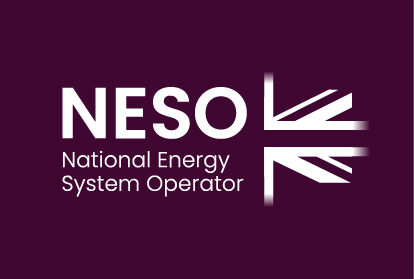This project aims to understand drivers behind the location of data centres from a holistic viewpoint, within GB and internationally. This includes factors like land cost, telecoms infrastructure, labour for construction and water access, as well as energy-related factors like connection availability and power cost. It includes potential challenges and opportunities to the system of various scenarios.
The project will consider energy consumption of data centres (both present and future), best practices from other countries, solutions already in use and potential solutions to minimise strain on the grid. A geospatial analysis of GB data centres and future plans will feed into network and system planning, such as the Future Energy Scenarios (FES) and Strategic Spatial Energy Plan (SSEP).
Benefits
This project will help NESO to understand the potential for Data Centre growth within GB, the grid connection challenges and potential innovative solutions to explore further, thereby aiding our future planning.
Identifying inefficiencies and benchmarking best practices will help inform whether data centres can provide system value by minimising strain on the grid.
Improved future planning could result in:
- Improving the efficiency of connections and smoothing consumption can reduce pressure on the grid, allowing data centres to expand without causing grid congestion or contributing to the risk of outages, particularly during periods of high demand.
- Improved grid connections and the adoption of energy storage/backup systems will increase the resilience to fluctuations in grid supply, ensuring business continuity and reducing downtime risks.
Learnings
Outcomes
The outcomes of the project were as follows:
- The resulting demand scenarios have provided useful insight which have fed into FES 2025. It has also been used in consultation with DESNZ and DSIT to inform the recommendations in the AI Opportunities Action Plan.
- The report and findings were considered when the decision on the SSEP's approach to modelling data centres was being made. Specifically, it was used to understand the 2030 vision and projected capacities, as well as expected latency requirements of data centres (percentage of capacity that is locationally flexible). This information supported us during our engagement with government, as well as industry stakeholders.
- The outputs of this report are being used, alongside input from elsewhere, to consider implications for future connections processes.
The report draws on multiple sources, including market analysis from McKinsey & Company. NESO are responsible for the conclusions and recommendations of the research.
Lessons Learnt
Since data centres are a growing area of demand, there is scope for better collaboration across government and industry on data collection and sharing. This requires preparation to avoid delays with data provision and thorough review for consistency. Having a single, consolidated view on the data centre estate that could be updated annually would be a good first step. This would help inform future forecasts from Government and within NESO.
Since data centres are a growing area of demand, there is scope for better collaboration across government and industry on data collection and sharing. This requires preparation to avoid delays with data provision and thorough review for consistency. Having a single, consolidated view on the data centre estate that could be updated annually would be a good first step. This would help inform future forecasts from Government and within NESO.
The AI and data centre market is also very dynamic, which highlights the need for regularly revisiting forecasting and underlying assumptions. During the project at least two major events (DeepSeek launch, AI Growth Zones) were announced that could have a significant impact on future data centre projects. Greater co-ordination and regular reporting can help ensure the industry is better prepared to serve the digital and AI sector with new developments.
Building a view of the future data centre estate was challenging due to repeated speculative applications across regions, and assumed duplication in the connections queue.
AI developers and other third parties can sometimes quote MW size of a data centre based on its IT power requirements, which ignores non-IT loads like cooling for example. This led to some confusion early in the project when quantities were quoted by stakeholders without specifying what type it was.
The geospatial model was adapted for different output formats, as it became a resource for multiple teams.




